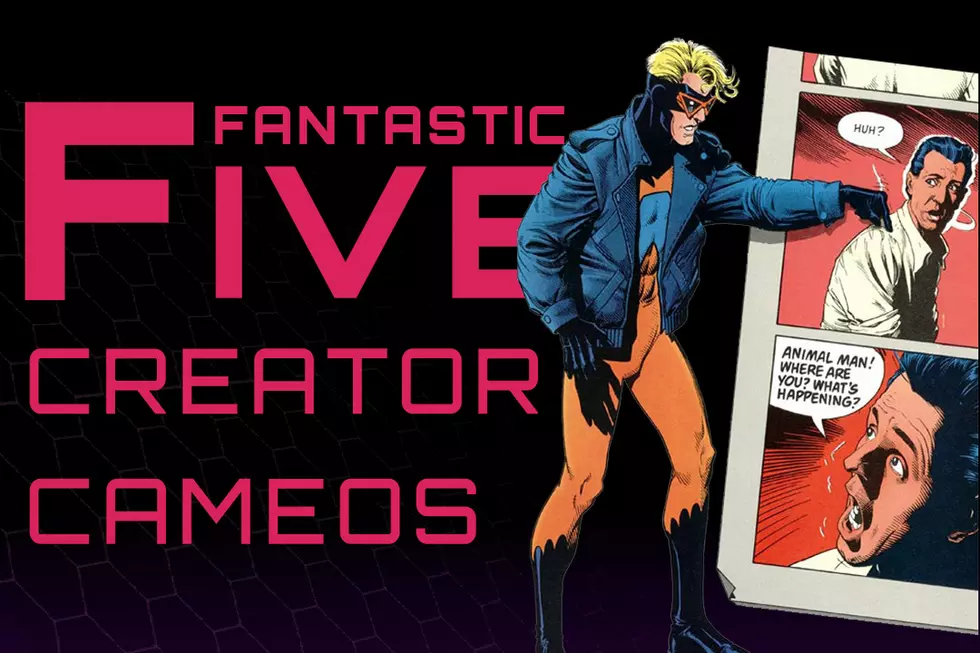
Thumbnail: The Mystical World of Marvel’s Crazy Headdresses
Womenswear in superhero costumes hasn’t always been about skintight, sexy unitards. In the early Silver Age of comics, readers saw the inception of the mystically-inspired heroine; one imbued with passive or non-contact abilities such as invisibility, telepathy, or magic. Especially common at Marvel, these mystic or faux-mystic heroines offered a contrast to the superhero brute force of their male colleagues, but they also had something else in common; the headdress.
Headdresses were an early staple in the wardrobe of Marvel's female characters, and while it’s easy to dismiss them as a quirky fashion faux pas, many of the women wearing these headdresses had very similar abilities or played similar roles. If you didn't know these characters were superheroes and villains, you might think their headdresses marked them as witches --- and in the cases of Scarlet Witch and The Enchantress, you wouldn't be far off the mark.
Scarlet Witch first appeared in X-Men #4 by Stan Lee and Jack Kirby in 1964, as the sole woman in Magneto's Brotherhood of Evil Mutants. Her abilities are essentially mystical despite their mutant origin. Throughout history and in various cultures, headdresses have been markers for shamans and people of mystic power --- a religious indication that the wearer is ordained, and bears abilities too profound for most to understand. Scarlet Witch's headdress can be taken to imply the presence of higher powers at work, even if those powers manifest in the form of faulty hex bolts.
Scarlet Witch isn’t alone in her witchy ways and fashionable headpieces. Enter the Enchantress, the Asgardian villainess that frequently taunts Thor. Created by Lee and Kirby in Journey Into The Mystery #103 in 1964, Enchantress’ abilities are rooted in mind control and the power of persuasion. She's not alone in her fashion choices among Asgard's villainous women. Hela; debuting an issue previous to the Enchantress, and Karnilla, debuting a few issues later, were also magical women notable for their elaborate headpieces.
'Witch 'is a common label for misunderstood women who are being demonized for their differences, and they tend to be associated with the dark side of the unknown. But divinity is also associated with purity and devotion, which might explain why nuns also often wear giant headpieces, and why the unusual fashion feature is equally present on heroes who represent virginal innocence or godliness, like Marvel Girl and Snowbird.
Marvel Girl’s pointed mask, designed by Don Heck and debuting in X-Men #39 in 1967, functions similar to Scarlet Witch's headpiece, but on the side of goodness. Jean, despite her mutant heritage, isn’t associated with witch tropes. She’s one of Professor Xavier’s prized students, and manages to be the moral core of the group while maintaining her youthful purity. Of particular note about Jean’s look is that it creates a focal point for artists when she uses her telekinetic powers. Or when screaming to Scott for help…
Then there’s the Inuit demigoddess Snowbird, a late addition to this group who first appeared in Uncanny X-Men #120 by Chris Claremont and John Byrne in 1979. Snowbird is a culmination of sorceress abilities and virginal fixation. Adorned in white, Snowbird’s abilities allow her to transform into a variety of arctic animals. She’s akin to immaculate goddesses like Artemis and Athena, whose connection to nature evokes their purity. Her headdress, reminiscent of a priestess, has a slight distinction in that it's encrusted with an arctic crystal, so that it also resembles the headpiece of a monarch.
All of these women --- and many others in the Marvel pantheon, like Storm, Polaris, Sif, and Deathbird --- are great examples of the influence of mysticism on costume design. Wardrobe acts as a primary form of visual commentary, and perhaps these costumes have been speaking to us all along, even if they also represent the ridiculous fashion extravagances of their eras.
More From ComicsAlliance






![Super7 ReAnimates Alien and Predator, Masters More of the Universe [Toy Fair 2017]](http://townsquare.media/site/622/files/2017/02/IMG_2000.jpg?w=980&q=75)


